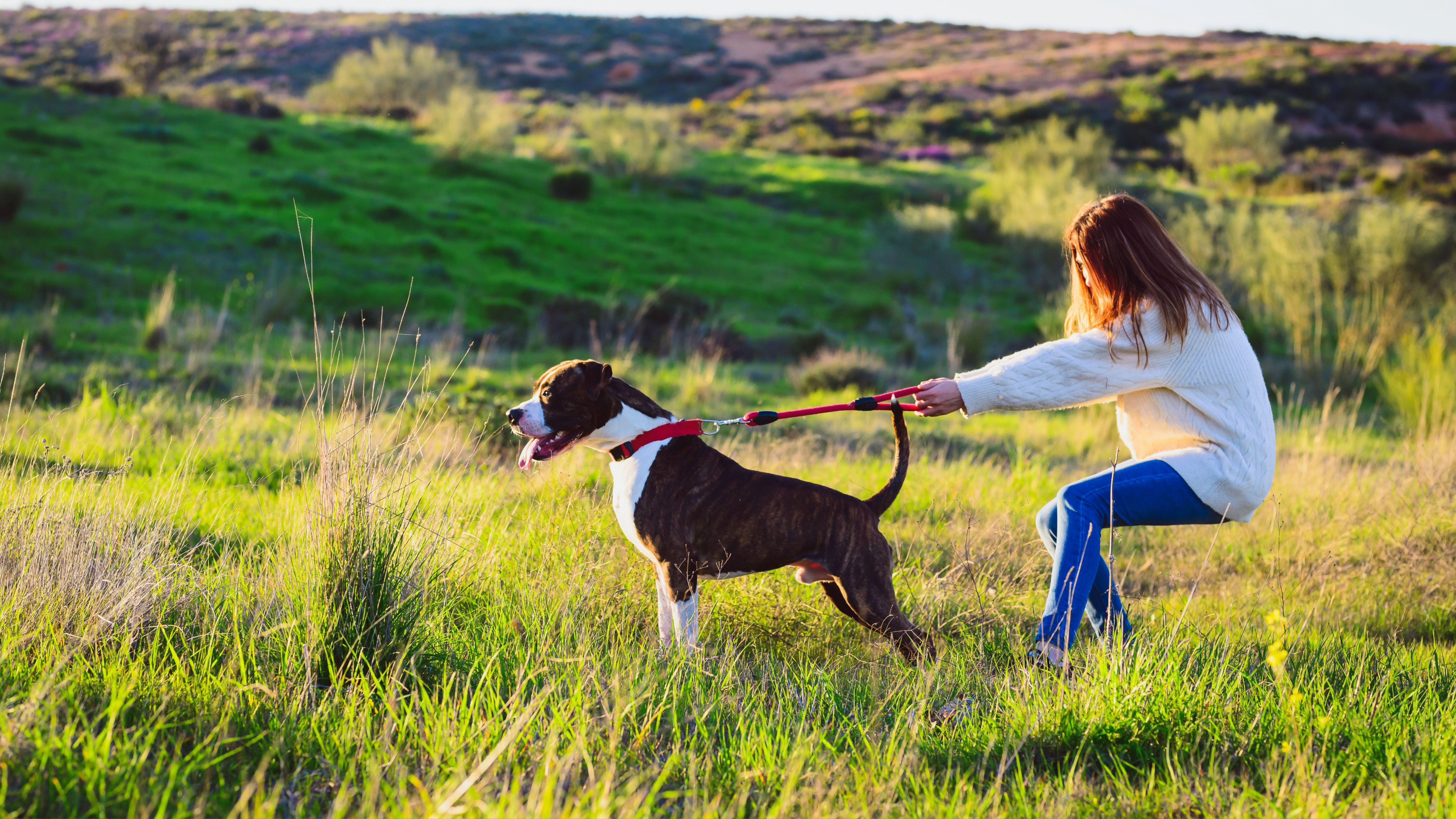
Does your dog like pulling on their leash? It’s a common issue for dog parents to face – often, our pups are just so excited to investigate the world around them, and we aren’t moving fast enough for their liking!
You might have one of the best dog leashes and plenty of treats in your pocket, but still feel as though nothing’s working. So, what can you do?
Well, while learning how to stop a dog pulling on a leash takes time, Juliana DeWillems, an expert dog trainer and the owner and head trainer at JW Dog Training & Behavior, has shared one simple thing you can do to help put a stop to pulling. Why not check it out and give it a try?
“One of our first interventions to reduce a dog’s pulling is to actually use a longer leash closer to eight or 10 feet, which is different than the standard four or six-foot leash,” DeWillems begins. “This accommodates a dog’s quicker stride, and allows them to sniff and explore without hitting the end of the leash as quickly.”
In DeWillems’ video, she’s walking a dog on a longer leash through a city. She’s able to easily gather up the leash when needed – if they’re walking around a blind corner or someone is passing by – but the dog also has the freedom to explore without pulling. If you’re not used to walking your dog without them pulling, here are three of the most common loose leash walking mistakes (and how to fix them).
She continues, “Pairing a longer leash with proactively taught leash skills can make for a really pleasant walk for both us and the dog.”
If you’re planning on using a longer leash, it’s important to teach a few key skills to help increase the chances of you enjoying a nice, relaxing walk. DeWillems recommends teaching name response, coming back to you to get a treat, and coming to your heel for brief distractions.
Remember, safety is paramount, and a longer leash can mean that you have less control over your dog if they’re distracted by something in the road, for example, or you pass a reactive dog on your journey.
Once your dog’s worked those out, you can look forward to some really enjoyable long-leash walks! In the meantime, if your dog enjoys walking off-leash, check out these 15 helpful ways to get your dog to come back to you on off-leash walks.







